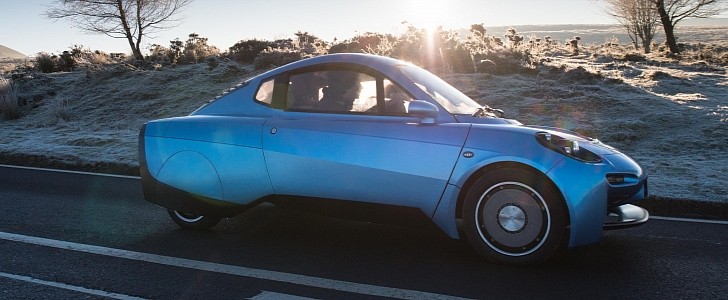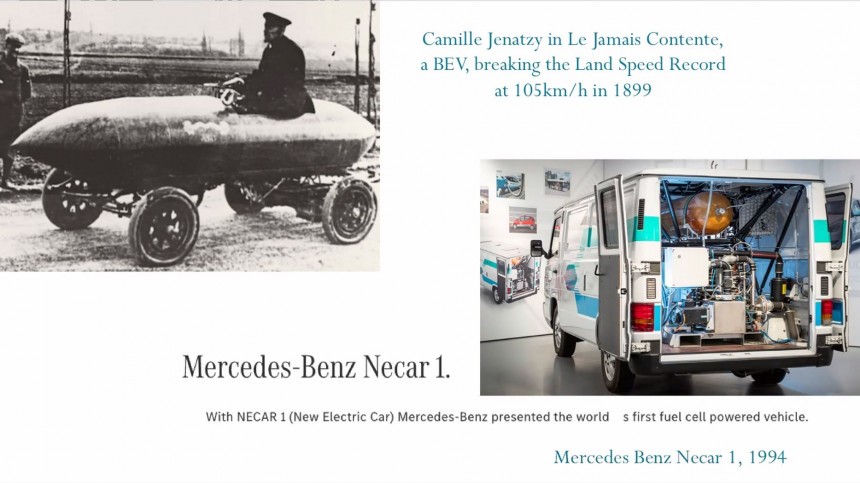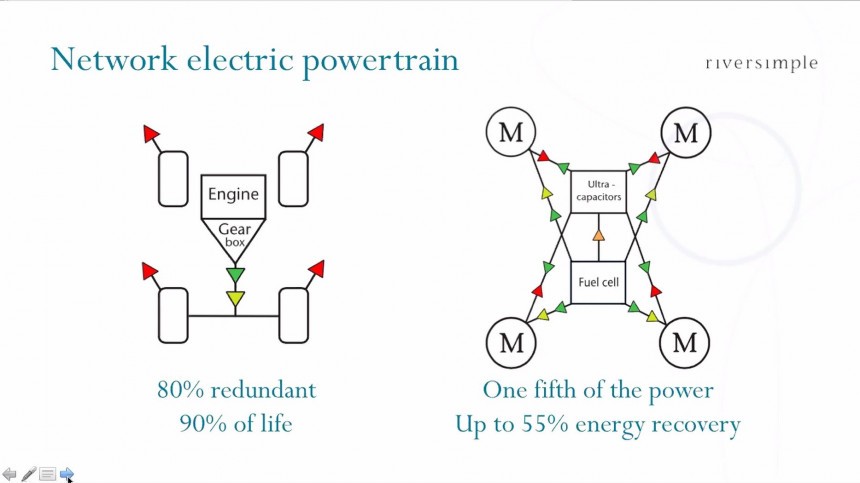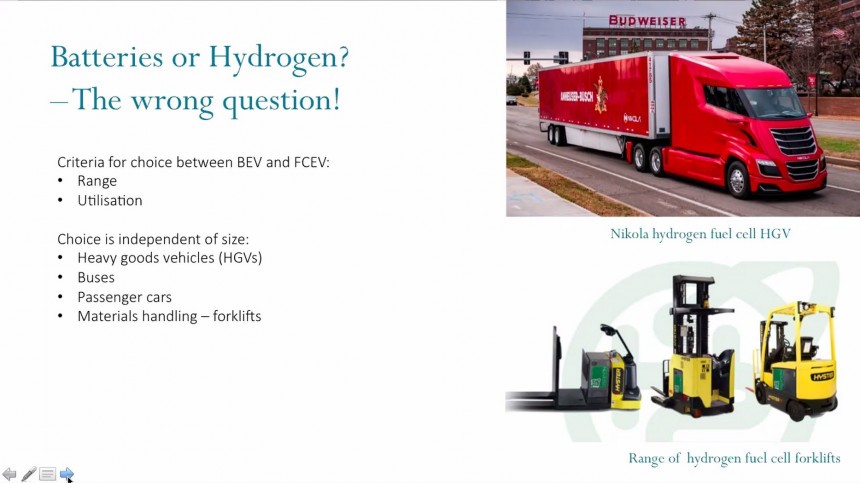One of the weirdest things about the electric car world is that all people and companies in that segment pledge to defend cleaner transportation and fight climate change. Yet, you’ll see that they have divided into different teams: those who think BEVs (battery electric vehicles) are the only solution possible and those who consider FCEVs (fuel cell electric vehicles) can also help.
Even companies take sides. According to Hugo Spowers – managing director and founder of Riversimple – the explanation for that is simple: they had no other choice.
His company promoted a webinar on June 11 called “Riversimple: Hydrogen for Transport.” Apart from Spowers, the discussion also involved Jenifer Baxter, Head of Innovation at Protium, and Juergen Maier, Riversimple's Custodian for Commercial Partners.
To put that under the proper context, Herbert Diess recently said that discussions about hydrogen in transportation are useless and that people should listen to science. That led James Glickenhaus to challenge him to beat the SCG Boot FCEV at the 2022 Baja 1000. Spowers had more to add to that.
“Legacy automakers are in survival mode. They have no money to invest in the development of fuel cells. There’s no option but to build BEVs.”
Vehicles powered by batteries are not new, but are a proven tech. In 1899, Le Jamais Content broke the land speed record by reaching 105 km/h. The first vehicle with a fuel cell was the Mercedes-Benz Necar 1 in 1994. That said, people like Diess and other automotive industry executives would have no escape from saying BEVs are the future.
“You have to say they are the solution. Otherwise, people will not buy them.”
There is indeed a matter of gaining the public’s trust with the EV shift. Most people are still concerned about how long battery packs will last and what happens if they fail when the warranty is already expired. The Nissan Leaf has been facing that problem now, and the battery pack replacement’s costs greatly exceed that of the entire used car.
In that sense, Riversimple has a proposition that takes these concerns from customers’ shoulders. Its first vehicle, the Rasa, will never be sold. Any client interested in one will pay a monthly fee to use it as if it were their own car, only without the hassle. They will not have to worry about licensing, servicing, insurance, and even refueling: that’s all included. When you don’t need the car anymore, you just return it to the company.
By taking these costs out of customers’ backs, Riversimple inverts the logic that surrounds the automotive world. If the cars are not reliable, it will be Riversimple who will have to pay for the repairs. If they are not safe, the company will have to carry the can with the insurance cost increase. If they are not energy efficient, the money for the hydrogen will come out of Riversimple’s pockets. If the company keeps improving all that, it improves its profit margins.
According to the Boston Consulting Group, FCEVs can convert only 20% of the energy in hydrogen to move a car. Riversimple achieves a much better percentage with what it calls the network electric car. It has no batteries, but ultracapacitors, which release and absorb energy much faster than cells. That is a need in the Rasa, a vehicle able to recover 55% of braking energy. The most efficient EVs in that task get around harvest about 10%.
Ultracapacitors are also much lighter, which makes the vehicle a more efficient machine. With that, the fuel cell can be much smaller than that used by the Hyundai Nexo or the Toyota Mirai, which brings costs and mass down.
With its first network electric car, Riversimple achieves the equivalent of 200 mpge. According to Spowers, even using grey hydrogen (extracted from natural gas without carbon capture), the Rasa still delivers 40 g/km of CO2.
Despite those qualities, Spowers does not deny that BEVs have a place in personal mobility, but he does not believe it will be the silver bullet for all transportation needs.
“BEVs are fantastic for local transport, with high energy efficiency. Despite that, they are too heavy and have short ranges that can only be compensated with larger battery packs that cost a fortune.”
For long distances and heavy vehicles, the only solution he can see would be hydrogen. It takes only 1.5 minutes to fill the Riversimple Rasa hydrogen tank for a range of 300 miles. Today’s fastest charging EVs can go from 5% to 80% in around 20 minutes for a lot less than 300 miles of range. The quickest solution so far in the BEV world is battery swapping, which may take as little as 3 minutes.
That is why Spowers and the other speakers said the best solution depends on range and utilization. For some uses, a BEV may be perfect. For others, there seems to be no replacement for hydrogen. Maier stressed that.
“Fuel cell electric vehicles will definitely have a market because heavy vehicles need fuel cells.”
Spowers then mentioned two aspects that corroborate that.
“New technologies develop in niches where the disadvantages do not matter. Besides, hydrogen stations are much cheaper than fast chargers. Creating an infrastructure for FCEVs demands a lot less money.”
For people concerned with the environment, Baxter reminded that FCEVs clean the air where they operate and urged them to realize all ways to clean transports are valid.
“Let’s be open to decarbonize transportation. Trying to channel everything to a single channel will make things harder. They should compound.”
His company promoted a webinar on June 11 called “Riversimple: Hydrogen for Transport.” Apart from Spowers, the discussion also involved Jenifer Baxter, Head of Innovation at Protium, and Juergen Maier, Riversimple's Custodian for Commercial Partners.
To put that under the proper context, Herbert Diess recently said that discussions about hydrogen in transportation are useless and that people should listen to science. That led James Glickenhaus to challenge him to beat the SCG Boot FCEV at the 2022 Baja 1000. Spowers had more to add to that.
“Legacy automakers are in survival mode. They have no money to invest in the development of fuel cells. There’s no option but to build BEVs.”
“You have to say they are the solution. Otherwise, people will not buy them.”
There is indeed a matter of gaining the public’s trust with the EV shift. Most people are still concerned about how long battery packs will last and what happens if they fail when the warranty is already expired. The Nissan Leaf has been facing that problem now, and the battery pack replacement’s costs greatly exceed that of the entire used car.
In that sense, Riversimple has a proposition that takes these concerns from customers’ shoulders. Its first vehicle, the Rasa, will never be sold. Any client interested in one will pay a monthly fee to use it as if it were their own car, only without the hassle. They will not have to worry about licensing, servicing, insurance, and even refueling: that’s all included. When you don’t need the car anymore, you just return it to the company.
By taking these costs out of customers’ backs, Riversimple inverts the logic that surrounds the automotive world. If the cars are not reliable, it will be Riversimple who will have to pay for the repairs. If they are not safe, the company will have to carry the can with the insurance cost increase. If they are not energy efficient, the money for the hydrogen will come out of Riversimple’s pockets. If the company keeps improving all that, it improves its profit margins.
Ultracapacitors are also much lighter, which makes the vehicle a more efficient machine. With that, the fuel cell can be much smaller than that used by the Hyundai Nexo or the Toyota Mirai, which brings costs and mass down.
With its first network electric car, Riversimple achieves the equivalent of 200 mpge. According to Spowers, even using grey hydrogen (extracted from natural gas without carbon capture), the Rasa still delivers 40 g/km of CO2.
Despite those qualities, Spowers does not deny that BEVs have a place in personal mobility, but he does not believe it will be the silver bullet for all transportation needs.
“BEVs are fantastic for local transport, with high energy efficiency. Despite that, they are too heavy and have short ranges that can only be compensated with larger battery packs that cost a fortune.”
For long distances and heavy vehicles, the only solution he can see would be hydrogen. It takes only 1.5 minutes to fill the Riversimple Rasa hydrogen tank for a range of 300 miles. Today’s fastest charging EVs can go from 5% to 80% in around 20 minutes for a lot less than 300 miles of range. The quickest solution so far in the BEV world is battery swapping, which may take as little as 3 minutes.
“Fuel cell electric vehicles will definitely have a market because heavy vehicles need fuel cells.”
Spowers then mentioned two aspects that corroborate that.
“New technologies develop in niches where the disadvantages do not matter. Besides, hydrogen stations are much cheaper than fast chargers. Creating an infrastructure for FCEVs demands a lot less money.”
For people concerned with the environment, Baxter reminded that FCEVs clean the air where they operate and urged them to realize all ways to clean transports are valid.
“Let’s be open to decarbonize transportation. Trying to channel everything to a single channel will make things harder. They should compound.”





















